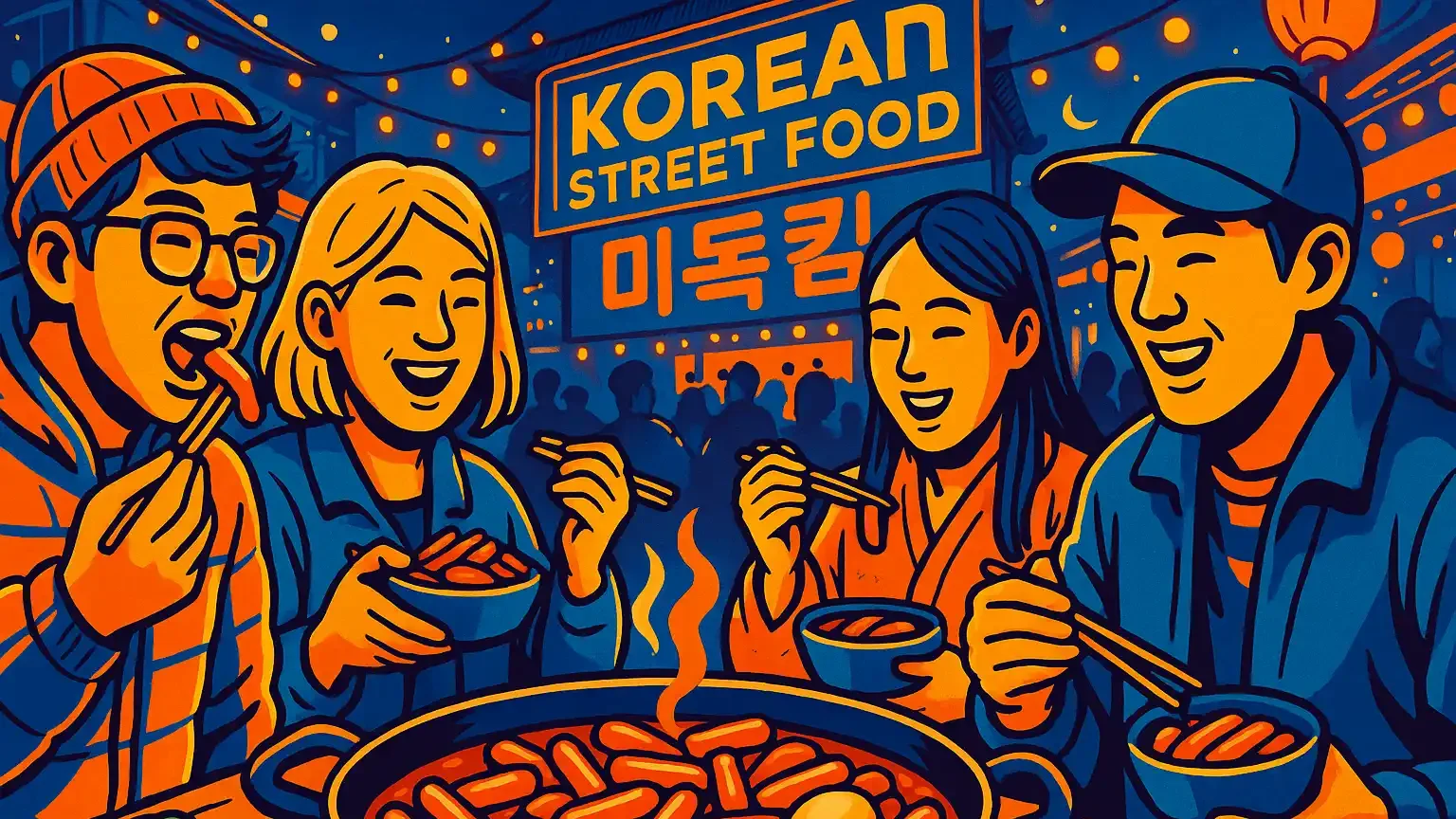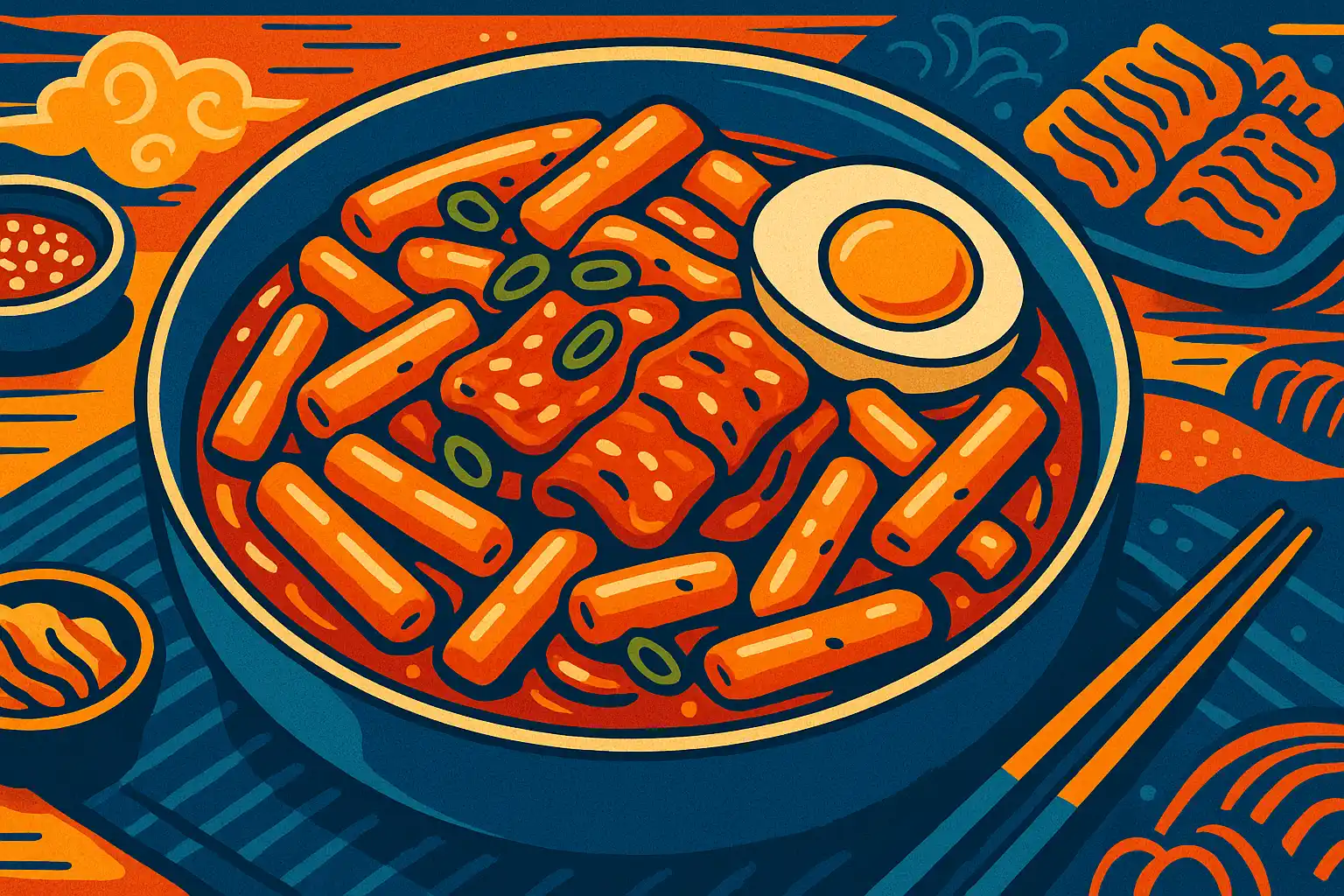In the world of Korean Culture, food plays an essential role in expressing tradition, identity, and everyday life. One of the most popular dishes that often sparks curiosity is What Is Tteokbokki. Known for its bold flavors, vibrant colors, and chewy texture, tteokbokki has become more than just a meal; it is a cultural symbol. People around the globe encounter this dish through Korean dramas, street food tours, and social media, making it a global food trend. Understanding What Is Tteokbokki in Korean Culture is important because it reveals how cuisine connects with history, traditions, and community. Exploring this dish helps explain not only its delicious taste but also its cultural relevance. With its growing international popularity, knowing the meaning, background, and significance of tteokbokki provides a deeper appreciation of how Koreans celebrate and share their food heritage with the world.
What Is Tteokbokki?

It is a traditional Korean dish made from cylindrical rice cakes, called tteok, stir-fried in a sweet and spicy red chili paste sauce known as gochujang. The dish is often enhanced with fish cakes, boiled eggs, scallions, and other add-ins, creating a hearty and flavorful street food favorite.
Within the Korean Culture community, synonyms or variations of this dish include ddeokbokki, topokki, and tteok-bokki. All these terms point back to the same concept: chewy rice cakes in a rich, spicy sauce. It also includes modern interpretations, such as cheese tteokbokki, cream-based versions, or fusion dishes that reflect evolving tastes.
This dish represents more than just food; it is a concept tied to comfort, nostalgia, and social connection. For many Koreans, tteokbokki is a reminder of school days, late-night snacks, or gatherings with friends. It also extends beyond flavor—it carries emotional and cultural weight, explaining why it has remained a favorite for generations.
Detailed Explanation on What Is Tteokbokki
It is an essential to break down its key components and cultural context. The rice cake, or tteok, is the central element. Made from glutinous rice flour, these cakes are chewy and dense, giving the dish its signature texture. The sauce, typically prepared with gochujang (fermented chili paste), adds depth by combining sweet, spicy, and umami flavors. This balance makes the dish both comforting and exciting to eat.
While the basic form remains consistent, the dish adapts to different situations. Street vendors often serve it as quick, affordable food, while restaurants create gourmet versions with seafood, cheese, or black bean sauce. This adaptability reflects the flexibility of Korean food traditions.
Examples of tteokbokki appear frequently in popular culture. In Korean dramas, characters often share a plate of tteokbokki during emotional or romantic scenes, symbolizing warmth and togetherness. At festivals, vendors sell it to celebrate community and joy. These examples illustrate the dish’s strong connection to Korean identity and daily life.
Another key concept of the dish is its role as a social food. It is rarely eaten alone but shared in groups, often accompanied by casual conversation. This context highlights its meaning beyond food—it becomes an experience. Eating the Korean food brings people together, whether on busy Seoul streets or in family kitchens.
The explanation of this dish also ties into the broader culinary concept of balance in Korean cuisine. Korean food often emphasizes harmony between textures, flavors, and temperatures. Tteokbokki embodies this with its chewy rice cakes, spicy sauce, and complementary side ingredients. In essence, it is an overview of how Koreans merge tradition with taste to create food that satisfies both hunger and cultural pride.
History or Origin
The history of tteokbokki reveals how Korean Culture has shaped and preserved traditional foods. Its origin dates back to the Joseon Dynasty, where an early version appeared as a royal court dish. This original form was not spicy but savory, often prepared with soy sauce and beef. It was considered a delicacy reserved for the elite.
The modern version of the dish, with its iconic red color and spicy flavor, emerged in the 1950s. During this time, gochujang became a key ingredient in Korean households, and vendors began serving the dish as affordable street food. Its evolution from royal cuisine to everyday snack highlights the way traditions adapt over time.
Over the years, it has maintained its popularity, spreading across regions and generations. Its origin story reflects Korea’s resilience and creativity, turning a simple rice cake dish into an international cultural icon. Today, its background stands as a fun fact in global food history, showing how Koreans preserved their heritage while sharing it worldwide.
Applications or Uses

The Korean food holds many uses and applications in Korean Culture, extending far beyond just being a meal. One of its primary roles is as street food. Found in markets, roadside stalls, and food festivals, it provides a quick, flavorful snack for people of all ages. Vendors often serve it alongside fish cakes on skewers or fried foods, creating a complete experience.
In households, it is prepared as comfort food. Families cook it for casual meals, late-night cravings, or celebrations. Its versatility allows it to fit both everyday and special occasions. Restaurants, meanwhile, have elevated the dish into gourmet dining, adding unique twists that appeal to tourists and locals alike.
The dish also plays a cultural role. It represents togetherness, making it a favorite at gatherings, parties, and even in school cafeterias. Tteokbokki connects Koreans across generations, as older people recall traditional versions while younger ones enjoy modern adaptations.
Internationally, the dish has gained recognition as a symbol of Korean food culture. Cooking classes, food tours, and global K-pop events often include tteokbokki as a way to showcase authentic Korean cuisine. Its presence in the global market highlights its importance as a cultural ambassador. From local markets to worldwide restaurants, it continues to be a dish that represents tradition, innovation, and identity in Korean Culture.
Health, Symbolism, and Global Popularity of Tteokbokki
Tteokbokki is more than comfort food—it carries nutritional, cultural, and global significance. Its chewy rice cakes provide energy, while add-ins like fish cakes, eggs, and vegetables add balance. Modern variations even offer lighter, health-conscious options. Symbolically, sharing tteokbokki reflects Korea’s values of unity and joy, making it a nostalgic favorite tied to family and friendship. Globally, it has become a cultural icon thanks to K-dramas, K-pop, and food tourism. From street stalls in Seoul to international restaurants and instant meal kits, tteokbokki now connects people worldwide to Korean cuisine.
Conclusion
Tteokbokki is more than a spicy rice cake dish—it is a symbol of Korea’s creativity, resilience, and cultural pride. From its beginnings as a royal delicacy to its transformation into beloved street food, it embodies both tradition and innovation. Its flavors, textures, and symbolism reflect the values of togetherness and joy at the heart of Korean society. Today, as it continues to appear in dramas, festivals, and global dining, tteokbokki serves as both comfort food for Koreans and a cultural ambassador abroad. Whether enjoyed on a bustling Seoul street or in a kitchen halfway around the world, tteokbokki remains a timeless dish that unites people through flavor, memory, and shared experience.
Resources
- MyKoreanKitchen – Guide to Tteokbokki
- Maangchi – Tteokbokki Recipe
- LKI – Craving Korean Food? Try Tteokbokki! A Step-by-Step Guide to This Spicy Delight
- Korea Times – Bibigo’s ‘tteokbokki’ sparks global K-food craze
- Korean Bapsang – Tteokbokki (Spicy Stir-fried Rice Cakes)

